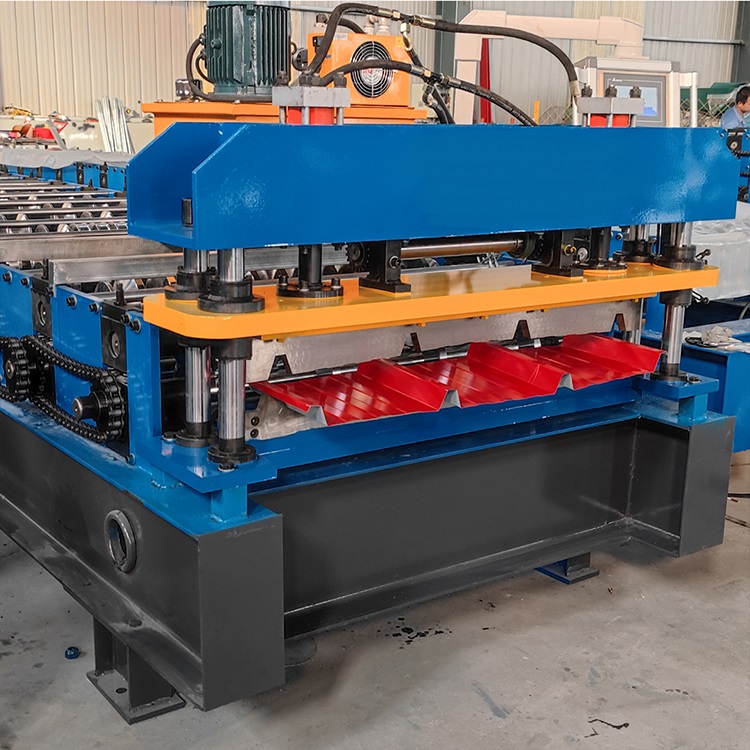Drip Edge Roll Forming Machine for Efficient Roof Edge Solutions and Seamless Installation
Understanding Drip Edge Roll Forming Machines A Comprehensive Overview
In the world of modern construction and roofing, the importance of high-quality materials cannot be overstated. Among the various components that play a critical role in ensuring the durability and effectiveness of roofing systems is the drip edge. Drip edges are metal strips installed along the eaves of a roof, designed to direct water away from the fascia and into the gutters. The process of manufacturing these crucial elements has evolved significantly, leading to the advent of specialized equipment such as drip edge roll forming machines.
What is a Drip Edge Roll Forming Machine?
A drip edge roll forming machine is a sophisticated piece of equipment specifically designed to produce drip edges and related metal profiles efficiently. Using advanced technology, these machines transform flat metal sheets—typically made from aluminum or galvanized steel—into precisely shaped drip edges by feeding the metal through a series of rollers. The rollers gradually shape the metal into the desired profile, ensuring consistent quality and precise dimensions.
How Does the Machine Work?
The operation of a drip edge roll forming machine can be broken down into several key steps
1. Material Preparation The process begins with the selection of the right raw material. The most common materials used are pre-coated steel or aluminum sheets. These materials are chosen for their durability and resistance to corrosion.
2. Feeding Mechanism The metal sheet is fed into the machine through a feeding track. This process must be precise, as inaccuracies can lead to defects in the final product.
3. Roll Forming As the metal sheet moves through the machine, it passes through a series of rollers. Each roller is designed to bend the metal at just the right angle, gradually transforming it into the desired shape. The number of rollers required depends on the complexity of the profile being formed.
4. Cutting and Finishing After the metal has been shaped, the roll forming machine often includes a cutting unit that sizes the drip edge to the specified length. Some machines also offer a finishing process, which can include stamping or embossing for additional aesthetic effects.
drip edge roll forming machine

5. Collection The finished drip edges are then collected at the end of the line, ready for packaging and shipment.
Advantages of Using Drip Edge Roll Forming Machines
There are several advantages to employing drip edge roll forming machines in the manufacturing process
1. Efficiency These machines can produce large quantities of drip edges in a relatively short period. Their automation reduces the labor required, allowing manufacturers to meet high demand without compromising quality.
2. Precision Roll forming technology ensures that each piece produced is identical, adhering to exact specifications. This consistency is critical in roofing applications, where precise measurements are necessary to ensure proper water drainage and protection against leaks.
3. Cost-Effectiveness While initial investments in roll forming machines may be high, the long-term savings from reduced labor costs and minimized material waste make them a financially sound choice for manufacturers.
4. Versatility Many roll forming machines can be adjusted to create various profiles, allowing manufacturers to diversify their product offerings without needing multiple machines.
5. Durability and Quality The materials used in the production of drip edges, combined with the precision of roll forming, result in high-quality products that withstand the elements and maintain their integrity over time.
Conclusion
In conclusion, drip edge roll forming machines represent a significant advancement in the production of roofing components. Their ability to efficiently create high-quality, precise drip edges plays a vital role in modern construction practices. As the industry continues to evolve, these machines will undoubtedly become even more integral to the roofing manufacturing process, ensuring building integrity and enhancing the longevity of structures. For those in the roofing industry, investing in a drip edge roll forming machine is not just a step towards modernizing production capabilities; it is a commitment to quality, efficiency, and excellence in every project undertaken.
-
Key Features to Look for in a Roof and Wall Panel MachineNewsMay.23, 2025
-
Key Features of a Roller Shutter Door Forming MachineNewsMay.23, 2025
-
Key Features of a Purlin Roll Forming MachineNewsMay.23, 2025
-
Key Features of a Cut to Length & Slitting LineNewsMay.23, 2025
-
Benefits of Using a Downspout Gutter Forming MachineNewsMay.23, 2025
-
Advantages of Using a Steel Deck Floor Roll Forming MachineNewsMay.23, 2025
-
Revolutionize Your Gutter Production with a Gutter MachineNewsMay.23, 2025








